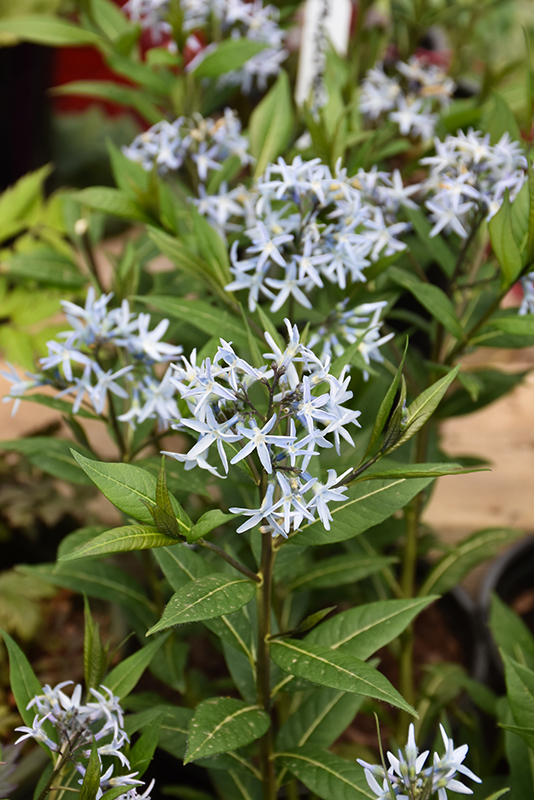PLANT FINDER
Plant Height: 18 inches Flower Height: 24 inches Spread: 3 feet
Sunlight:
Hardiness Zone: 5b Other Names: Blue Milkweed Brand: Walters Gardens Description: Star shaped, sky blue flowers in terminal clusters appear in late spring over vibrant green leaves with lighter midribs; beautiful fall color in tones of yellow-gold with orange highlights; great for borders, mixed beds, or a native garden Ornamental Features Starstruck Blue Star features showy clusters of sky blue star-shaped flowers at the ends of the stems from late spring to early summer. The flowers are excellent for cutting. Its attractive textured pointy leaves emerge olive green in spring, turning green in color with pointy buttery yellow spines. As an added bonus, the foliage turns a gorgeous harvest gold in the fall. The olive green stems are very colorful and add to the overall interest of the plant. Landscape Attributes Starstruck Blue Star is a dense herbaceous perennial with a mounded form. It brings an extremely fine and delicate texture to the garden composition and should be used to full effect. This is a relatively low maintenance plant, and should be cut back in late fall in preparation for winter. Deer don't particularly care for this plant and will usually leave it alone in favor of tastier treats. It has no significant negative characteristics. Starstruck Blue Star is recommended for the following landscape applications; Planting & Growing Starstruck Blue Star will grow to be about 18 inches tall at maturity extending to 24 inches tall with the flowers, with a spread of 3 feet. Its foliage tends to remain dense right to the ground, not requiring facer plants in front. It grows at a slow rate, and under ideal conditions can be expected to live for approximately 20 years. As an herbaceous perennial, this plant will usually die back to the crown each winter, and will regrow from the base each spring. Be careful not to disturb the crown in late winter when it may not be readily seen! This plant does best in full sun to partial shade. It prefers to grow in average to moist conditions, and shouldn't be allowed to dry out. It is not particular as to soil pH, but grows best in rich soils. It is quite intolerant of urban pollution, therefore inner city or urban streetside plantings are best avoided. Consider applying a thick mulch around the root zone over the growing season to conserve soil moisture. This particular variety is an interspecific hybrid. It can be propagated by cuttings; however, as a cultivated variety, be aware that it may be subject to certain restrictions or prohibitions on propagation.
A NetPS Plant Finder tool![]()
![]()
![]()
![]()
![]()
![]()
![]()
![]()
![]()
![]()
![]()
![]()
![]()


